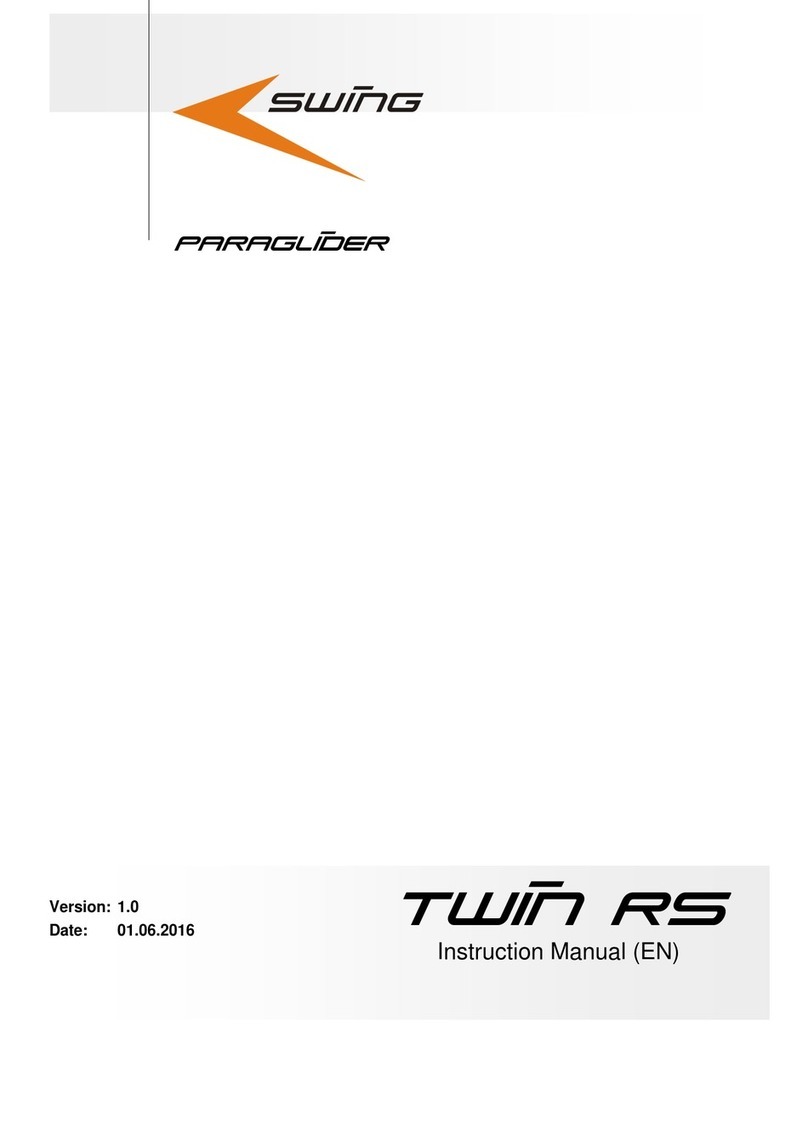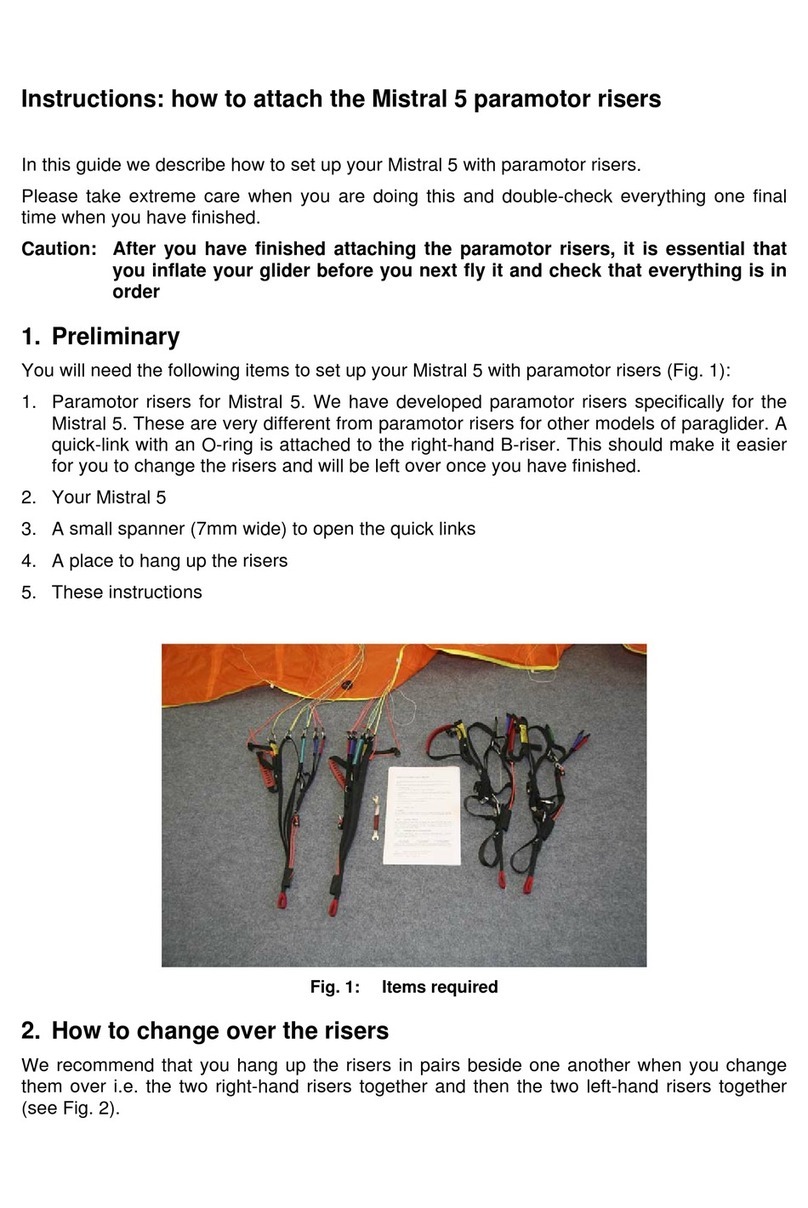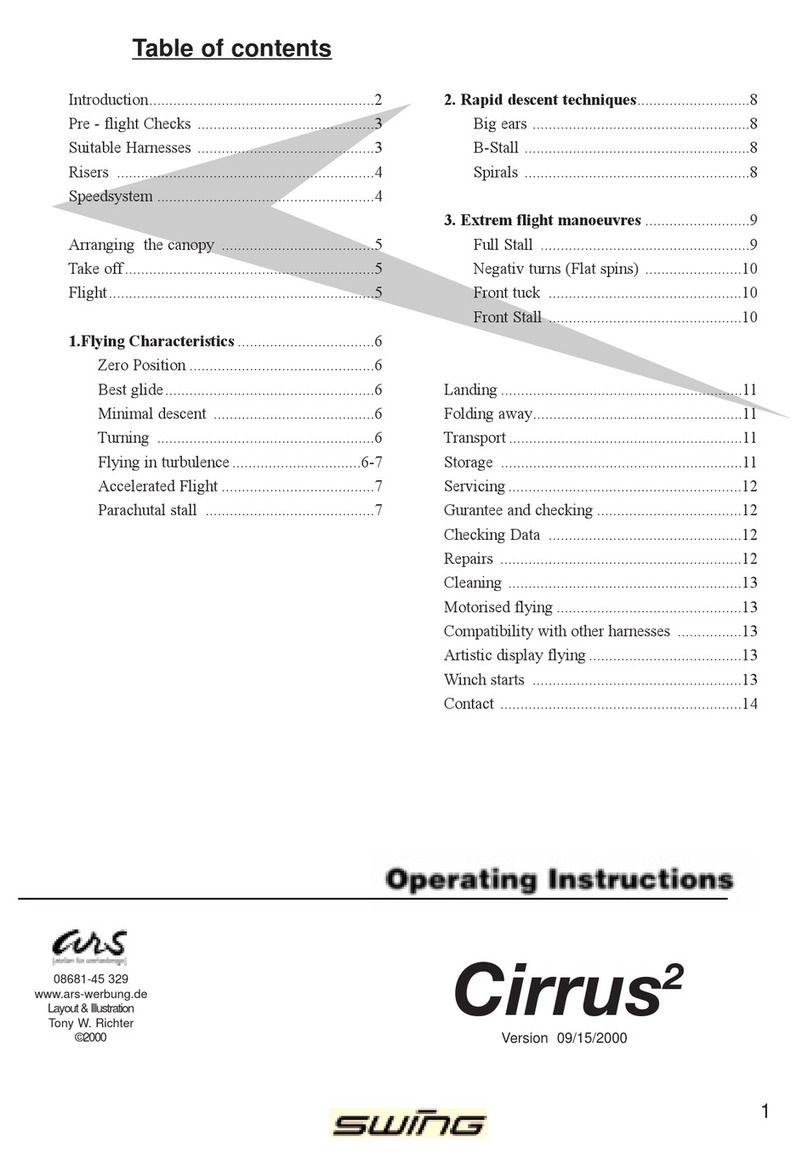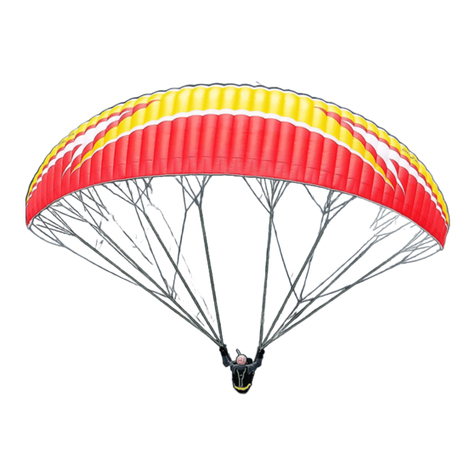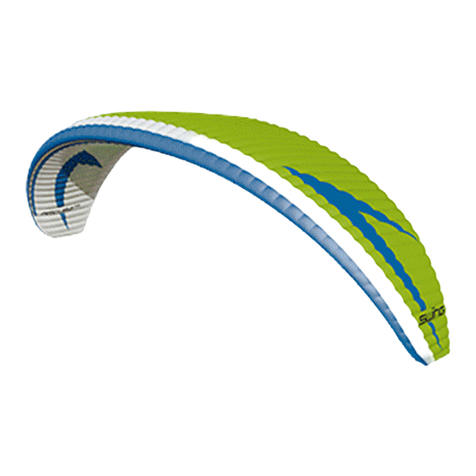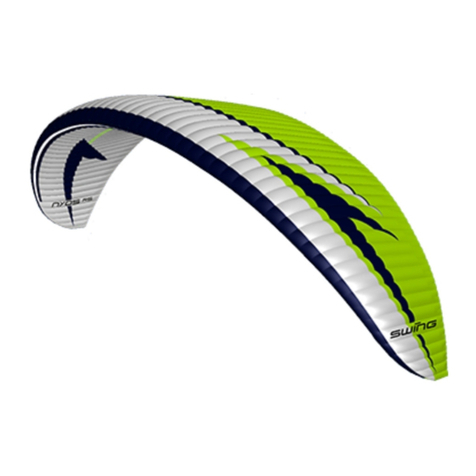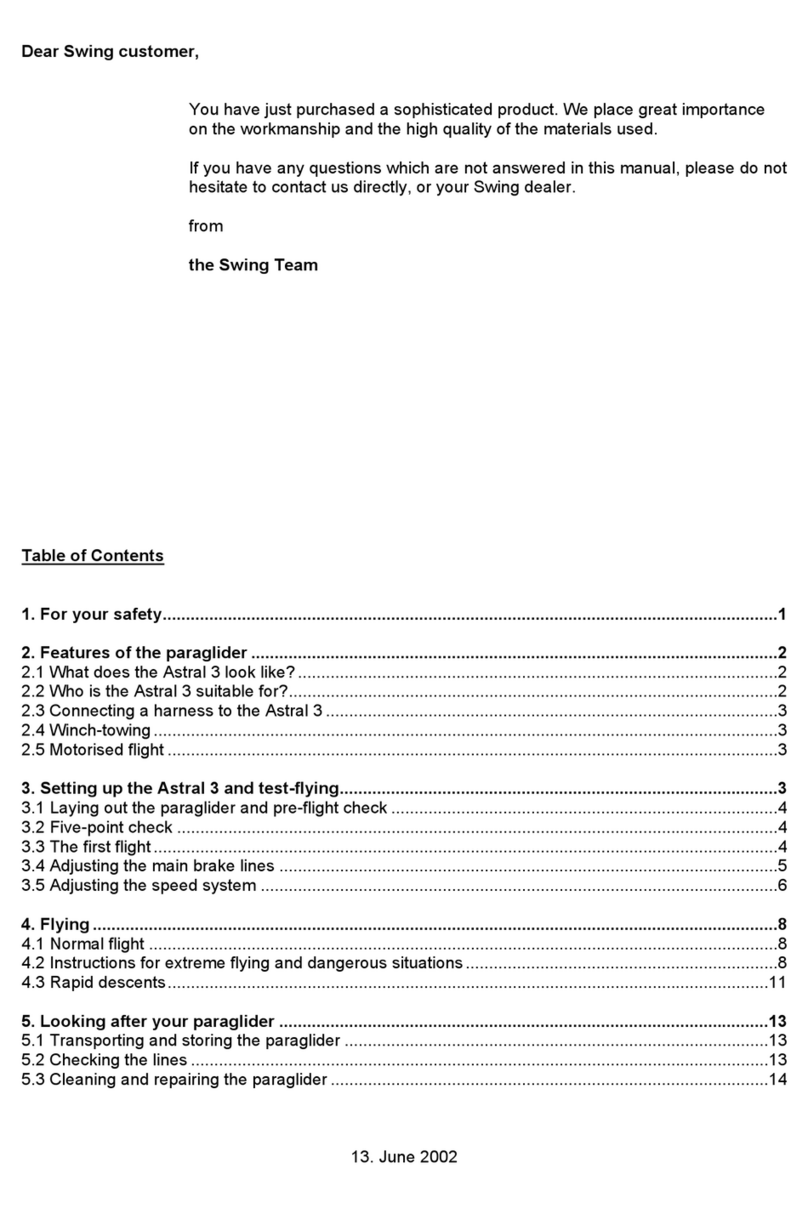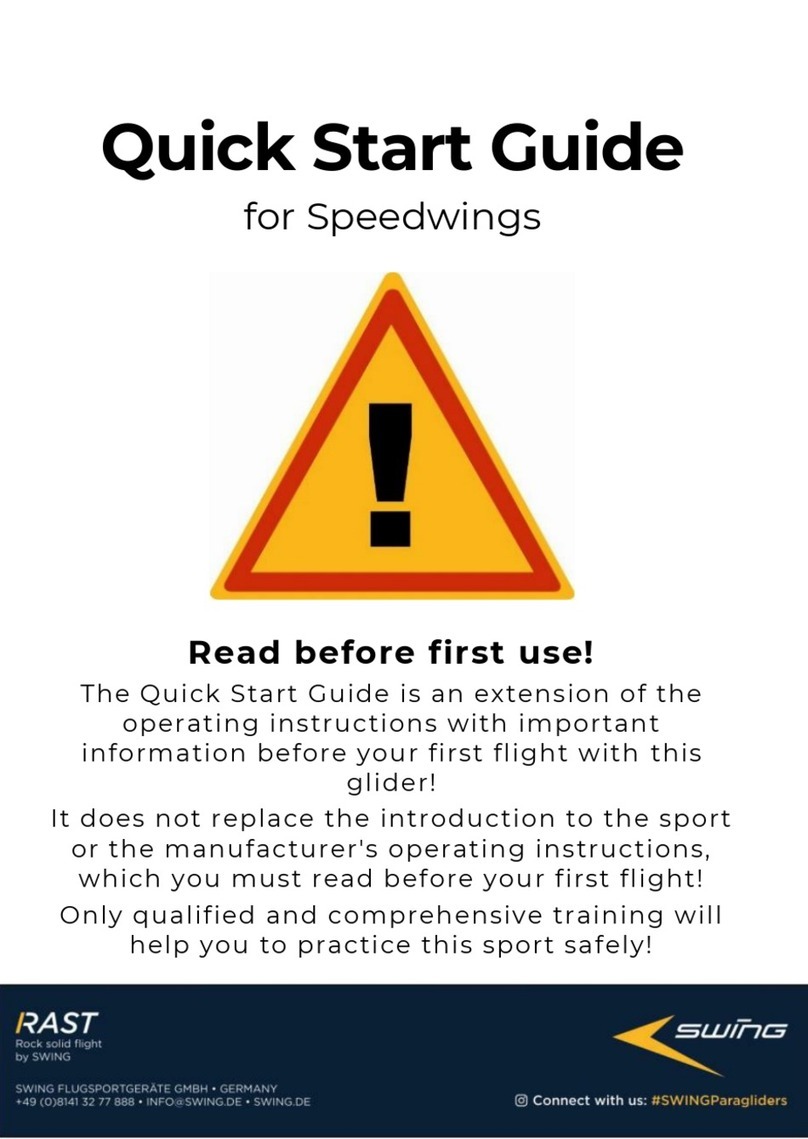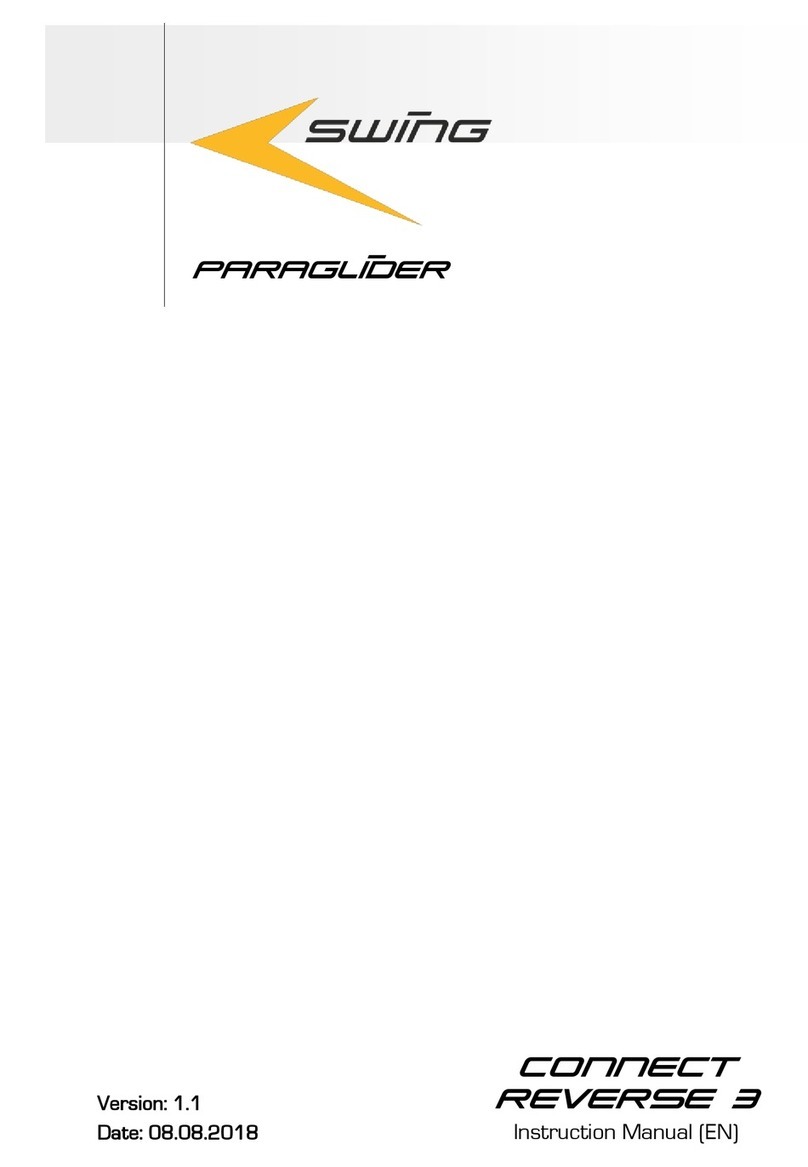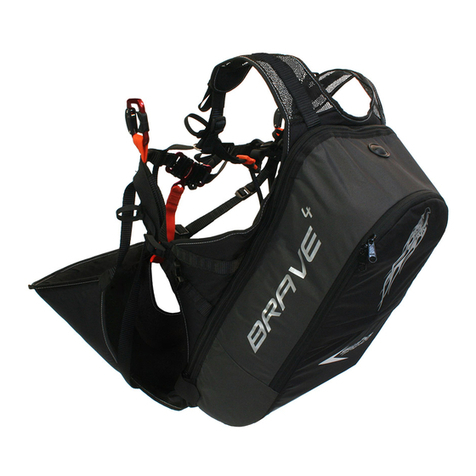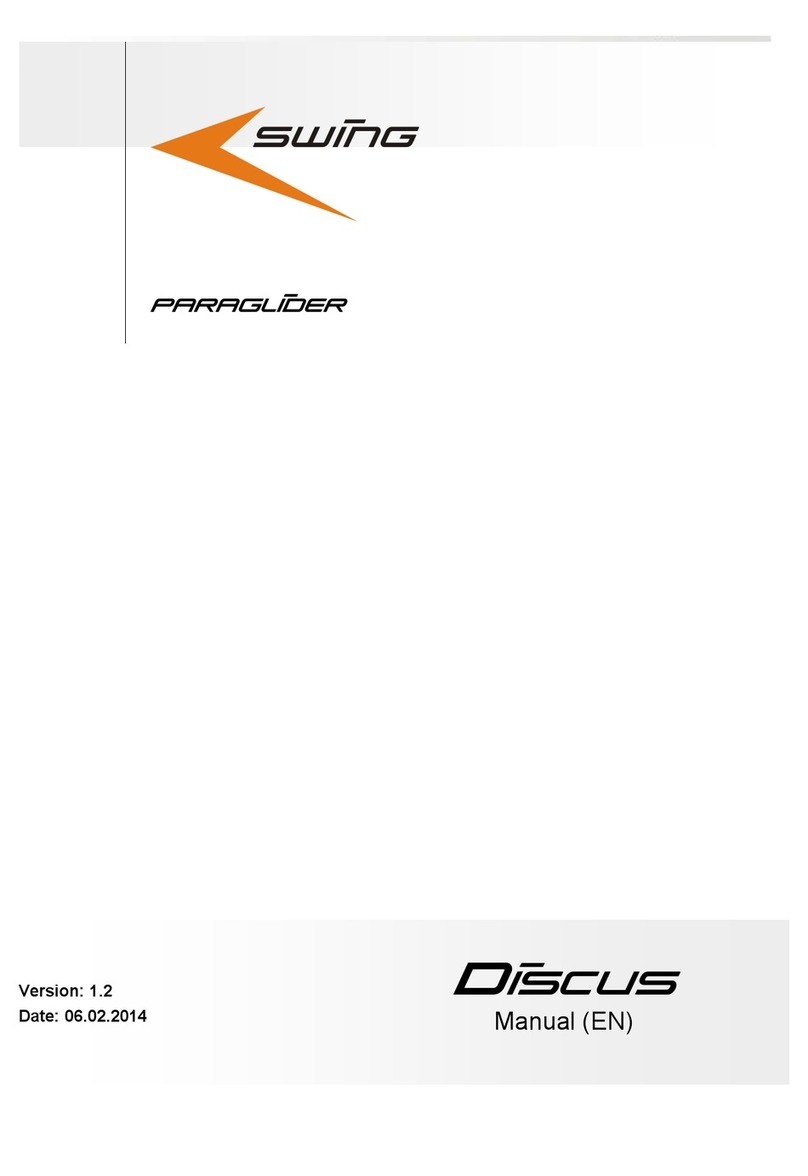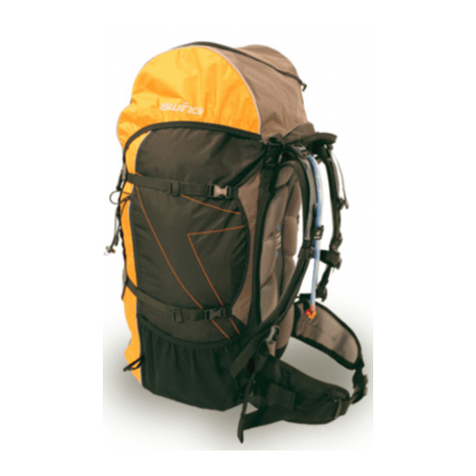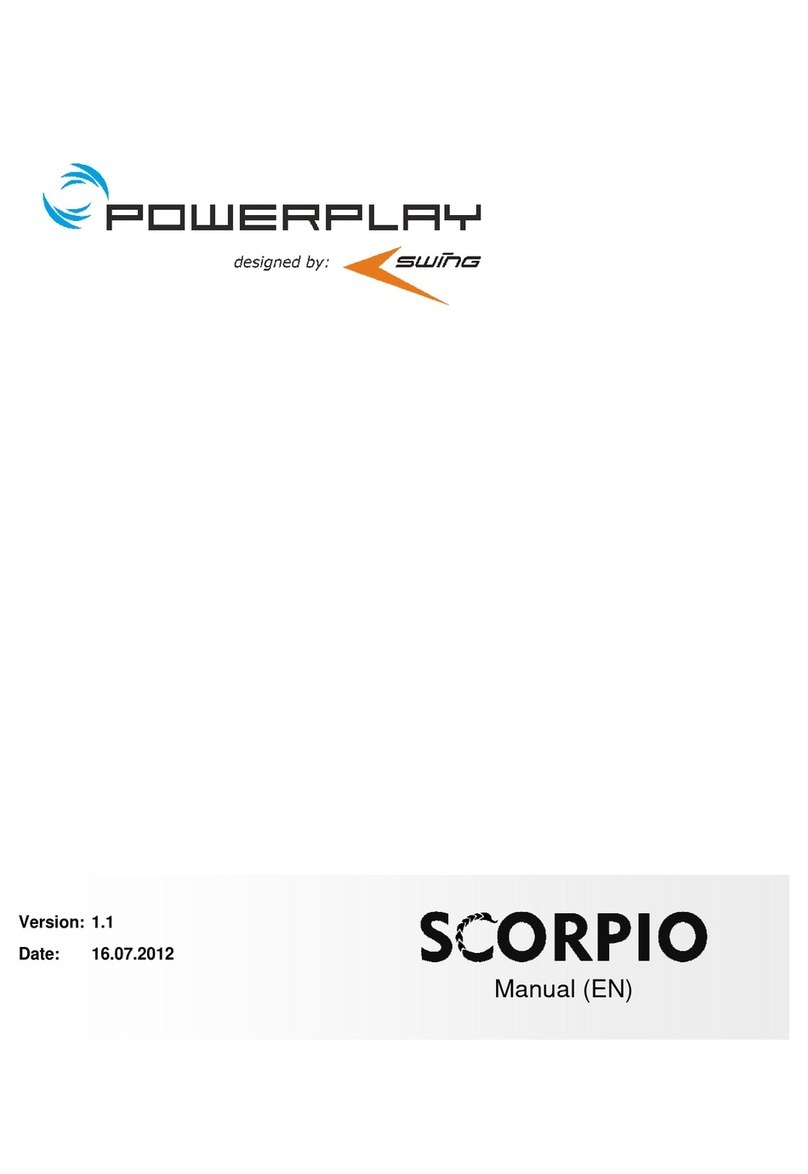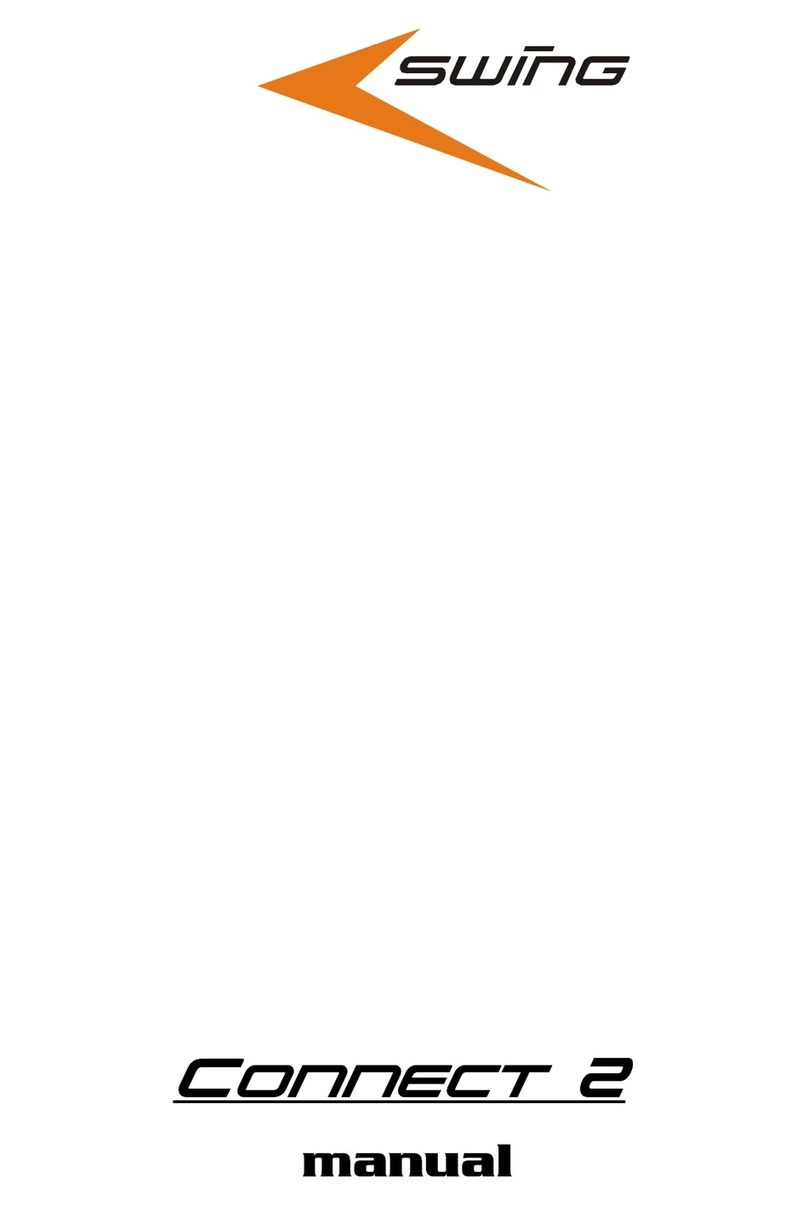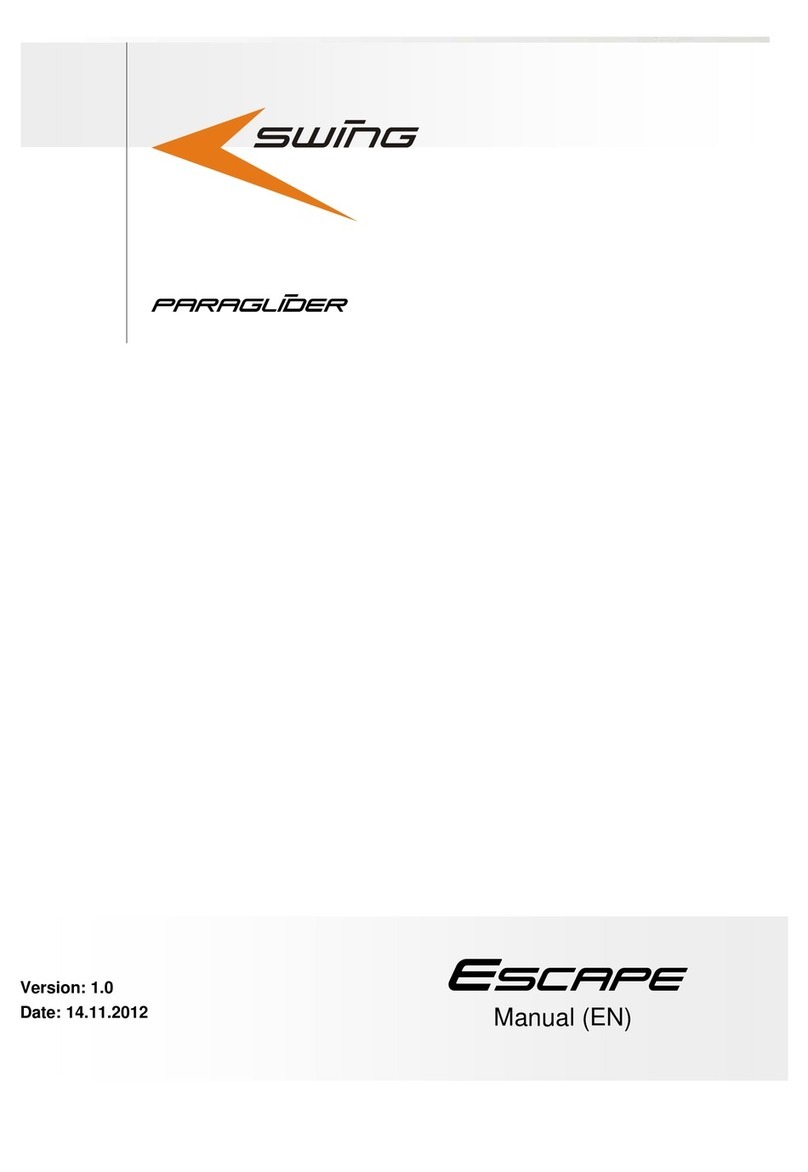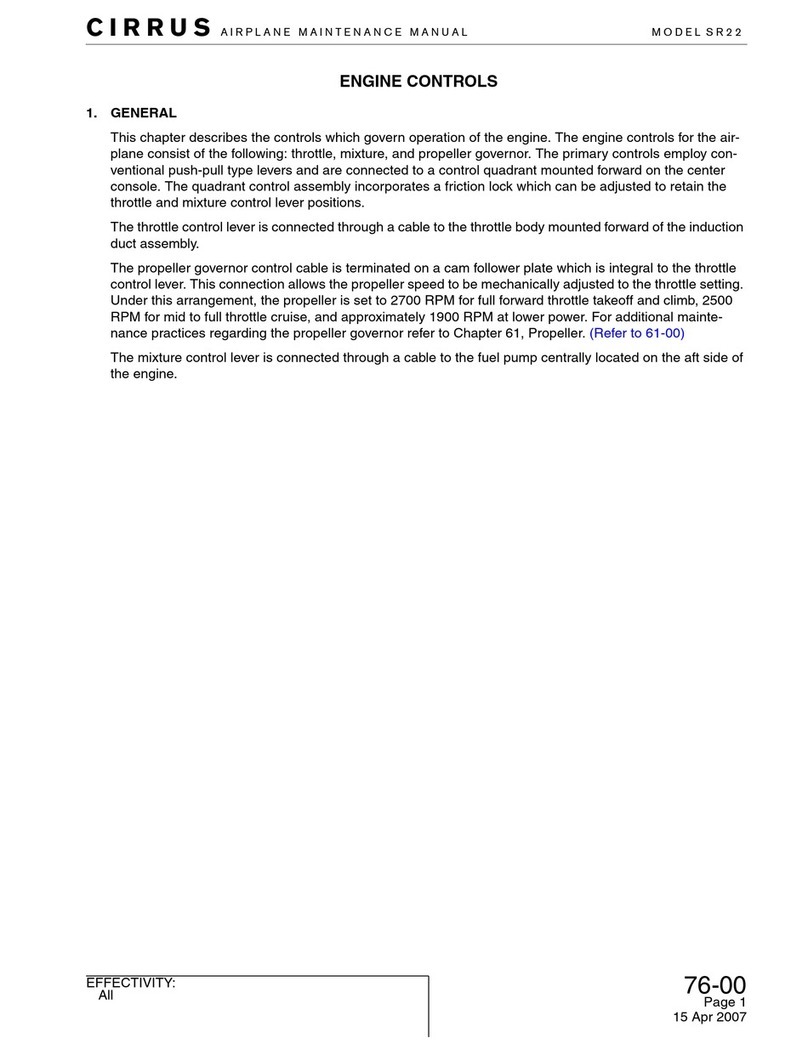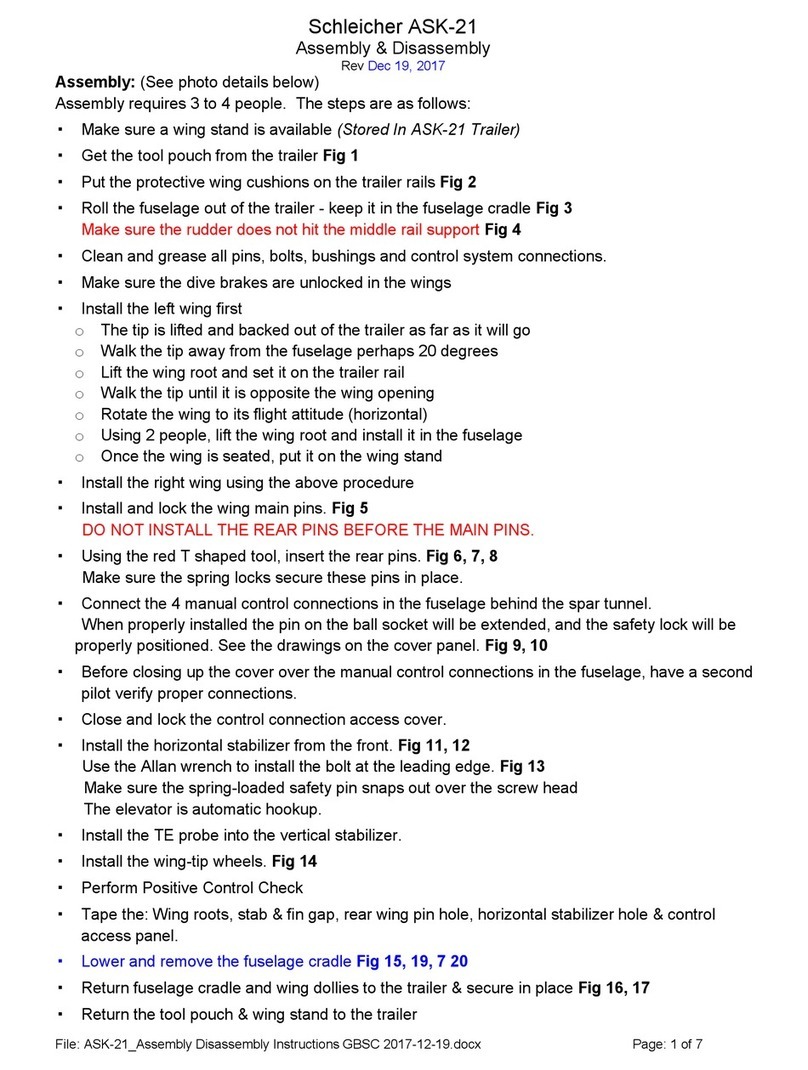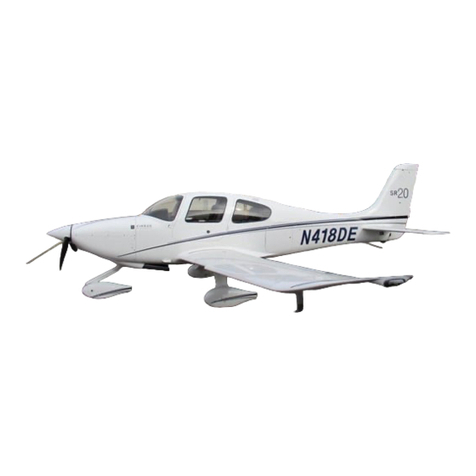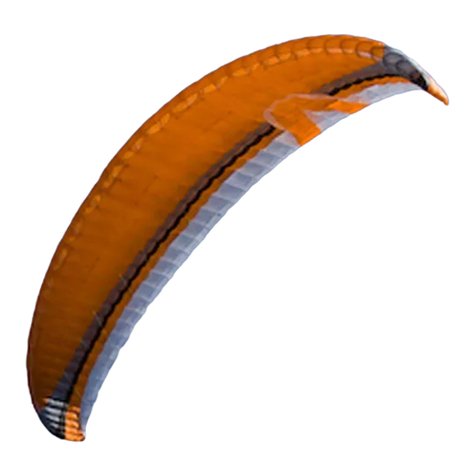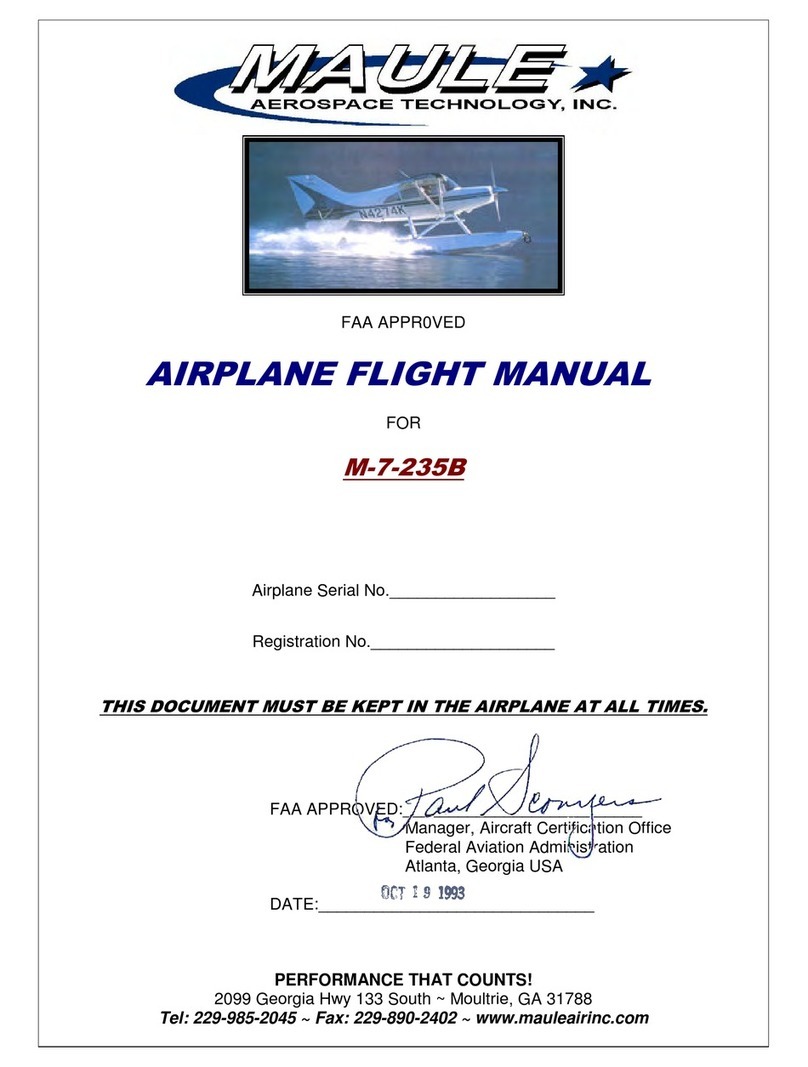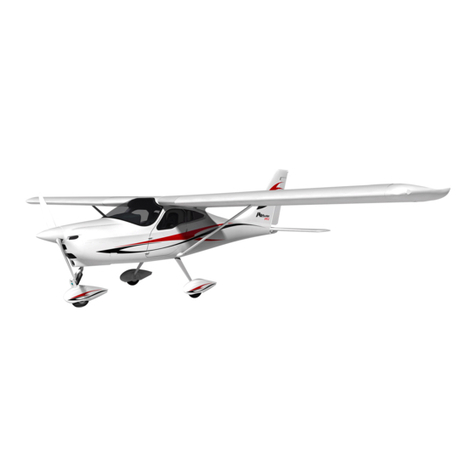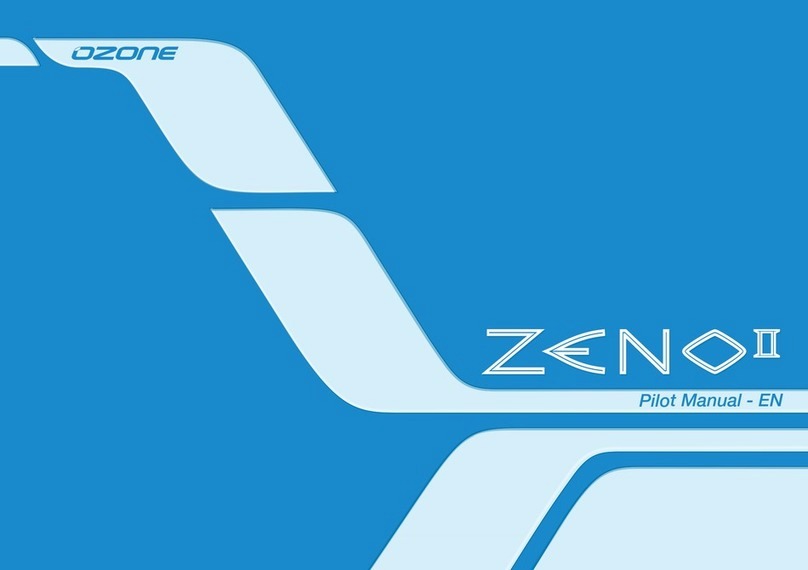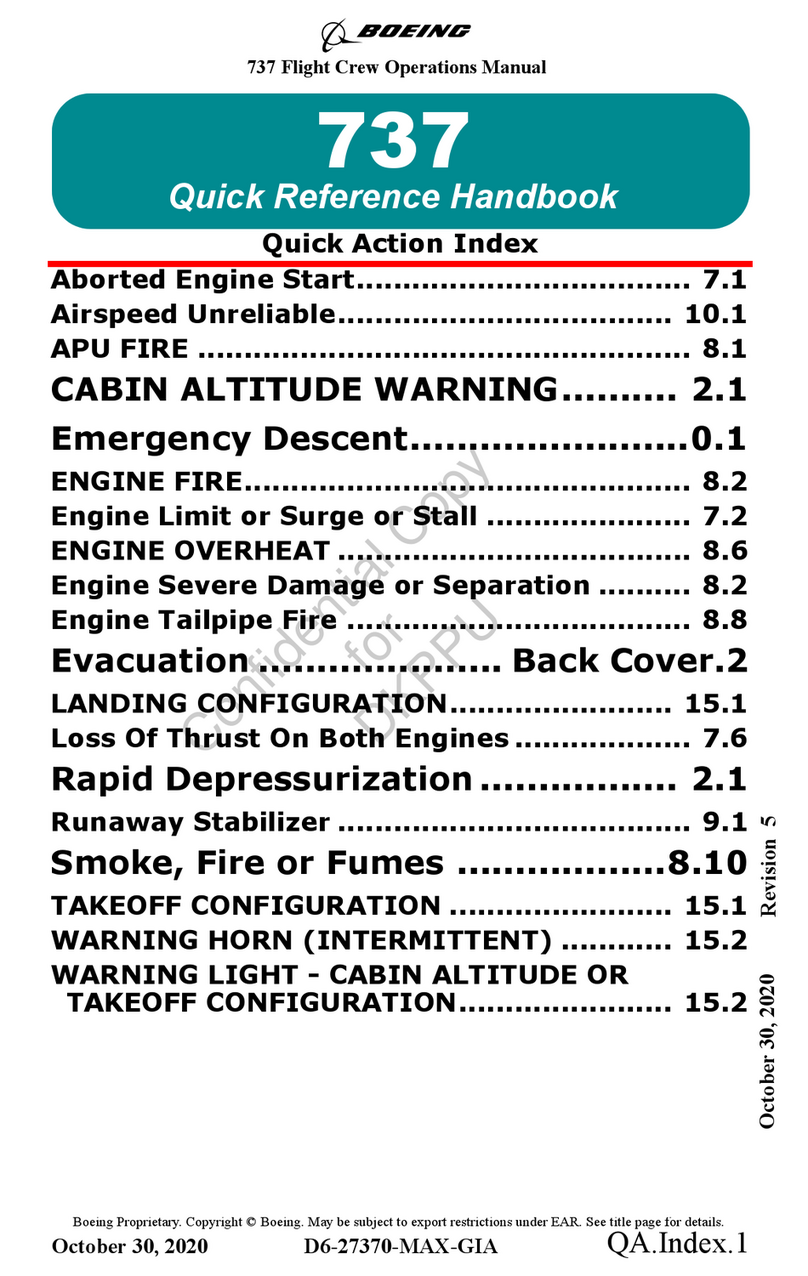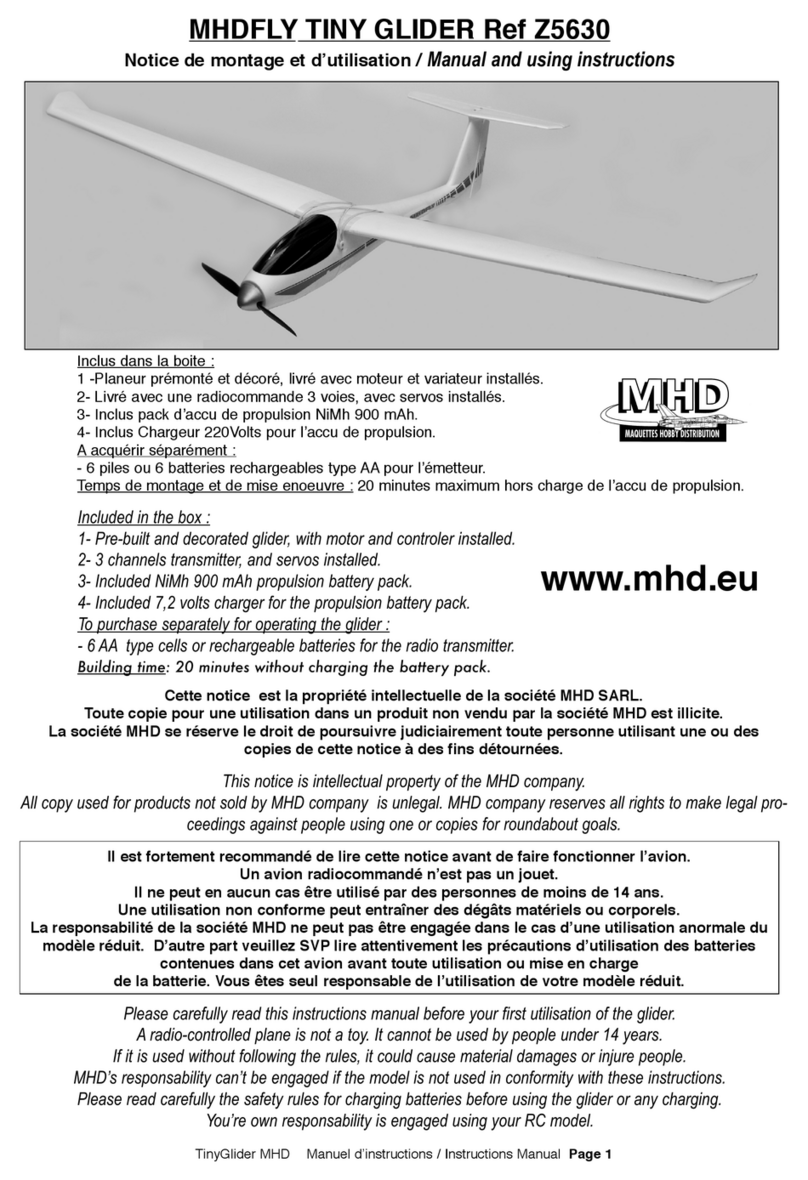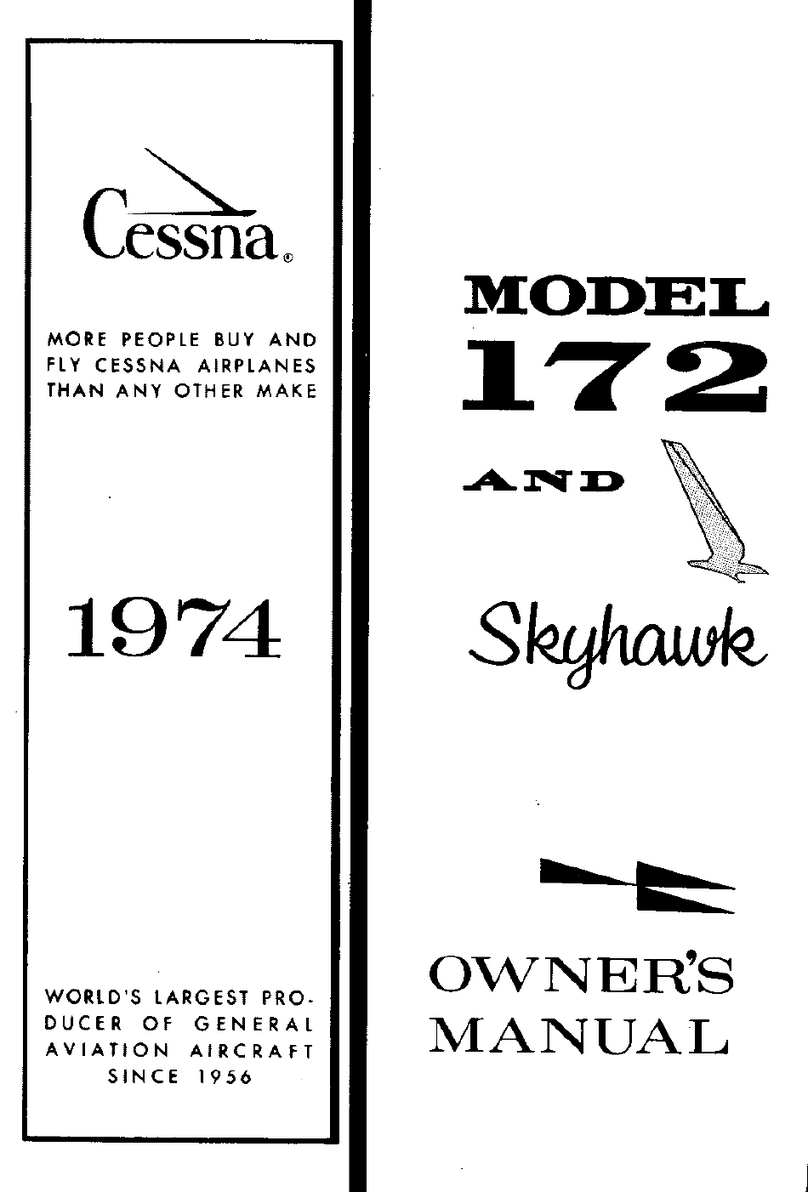Personal responsibility
Before using your MIRAGE 2 RS for the
first time, you agree that you have read
and understood the entire MIRAGE 2
RS Owner's Manual, including all
instructions and warnings contained
herein.
In addition, you agree to ensure that
any other user (who takes over the
product from you permanently or
temporarily) has also read and
understood the entire instruction
manual, including all instructions and
warnings, before using your MIRAGE 2
RS.
Risk Prevention
Use of the MIRAGE 2 RS and its
components involves certain risks of
bodily injury or death to the user of this
product or to others.
By using the MIRAGE 2 RS, you agree
to assume and accept all known and
unknown, probable and improbable
risks of injury.
The dangers associated with the
practice of this sport can be reduced
by careful attention to the warnings
listed in this instruction manual.
Ten safety rules
The greatest risk in speedflying and
speedriding is simplicity. It tempts you
to forget or ignore the dangers. Be
careful when the feeling of normality
arises.
1. Check the objective dangers!
Weather: Never fly in a foehn,
thunderstorm or cold front! Even
though your MIRAGE 2 RS offers
maximum safety, the dangers of
extreme turbulence cannot be
calculated.
Avalanches: Only move in unsecured
terrain with the necessary training and
equipment (avalanche transceiver,
shovel, etc.).
2. Check your equipment!
Take a close look at your equipment
before every launch and only launch
with undamaged material! Adapt your
equipment to the conditions: We
recommend carrying an emergency
parachute in case of a larger slope
distance.
3. Check yourself!
Never fly if you feel unwell, whether
you are physically unfit or worried. The
mountains don't run away - give
yourself a rest day.
4. What if...? Make a "Plan B"!
Don't make impulsive decisions. Take
your time to analyse the situation.
Always have a plan B (e.g. choice of
route, emergency landing sites, etc.).
5. Always make a "safetyrun"!
Explore a new route by flying with
sufficient altitude. While doing so, keep
an eye out for possible obstacles. Make
sure that flying close to the terrain
does not endanger third parties either.
6. Foot launch = increased risk!
Remember: Foot launching with the
MIRAGE 2 RS (= speedflying) increases
the risk potential many times over!
7. Have the courage to criticise!
Express criticism if you have the feeling
that people overestimate themselves.
In return: Be open to criticism, even if it
is unpleasant to admit mistakes.
8. Analyse your mistakes!
Analyse every near-accident as if it had
been a real accident and draw the
necessary lessons from it. Avoid
repeating the dangerous situation.
